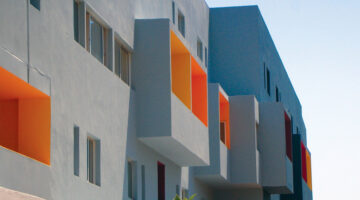

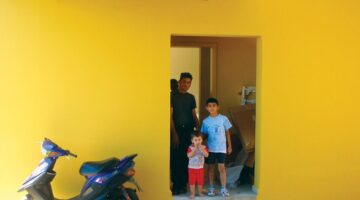
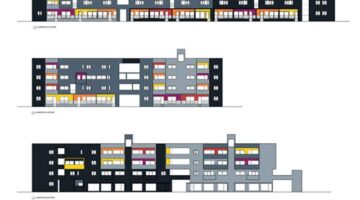
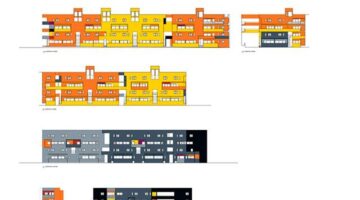
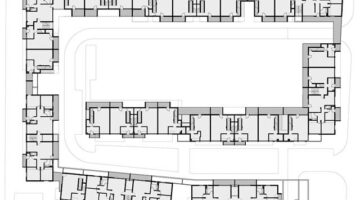
Housing For The Fishermen Of Tyre, Beirut
Main objectives of the project
In response to economic, social and cultural challenges of Tyre’s access to housing, the Al Baqaa Housing Cooperative was formed by fishermen, who secured land outside the city center with the help of the Greek Orthodox Church. Collaborating with architect Hashim Sarkis, they developed a housing project tailored to their needs, emphasizing equality among units and providing private outdoor spaces for all residents.
Date
- 2008: Construction
Stakeholders
- Architect: Hashim Sarkis
- Promotor: Al Baqaa Housing Cooperative
- Association for the Development of Rural Areas in Southern Lebanon (ADR)
Location
Country/Region: Lebanon, Tyre
Description
Tyre, an ancient coastal city situated south of Beirut, has grappled with maintaining its infrastructure amidst persistent chaos and conflict. Among the hardest-hit are the local fishermen, who have faced significant challenges due to the ongoing conflict with Israel, preventing them from engaging in deep-sea fishing. Despite being added to the UNESCO World Heritage List in 1984 during the Lebanese Civil War, the city faced new regulations on coastal construction, leading to overcrowded and unsanitary living conditions for the fishermen.
In response to these challenges, the fishermen established the Al Baqaa Housing Cooperative and secured a parcel of land outside the historic city center through a donation from the Greek Orthodox Church. Collaborating with architect Hashim Sarkis, they developed a housing project tailored to their needs.
Given the unpredictable context and the distance from Tyre's residential neighborhoods, the housing complex's design incorporates a prominent building along the site perimeter. This building not only serves as a boundary but also organizes the surrounding streets and lots, creating internal roads and open spaces. Pedestrian circulation is facilitated through openings in the linear mass, creating variations in building volumes that blend with the surroundings.
The fishermen's primary concern was equality among units, particularly in terms of views and outdoor spaces. Consequently, the units were designed differently based on their location. The project comprises 80 two-bedroom units, each with approximately 925 sq. ft. of interior space and half that in private outdoor areas, organized into three types of housing blocks or clusters.
A defining feature of the project is the central open space, characterized by a rectilinear spiral arrangement of buildings surrounding it. This space includes paved areas, a shared water tank, and planted gardens, with trees marking entrance paths between buildings, enhancing the connection between the central space and external streets.
In a decade-long collaboration with the cooperative, Sarkis developed a modern housing system that accommodates the fishermen's needs and budget while fostering a sense of community. Through thoughtful architecture, landscaping, and urban planning, the project exemplifies the transformative potential of design in mitigating conflict while honoring community values.

